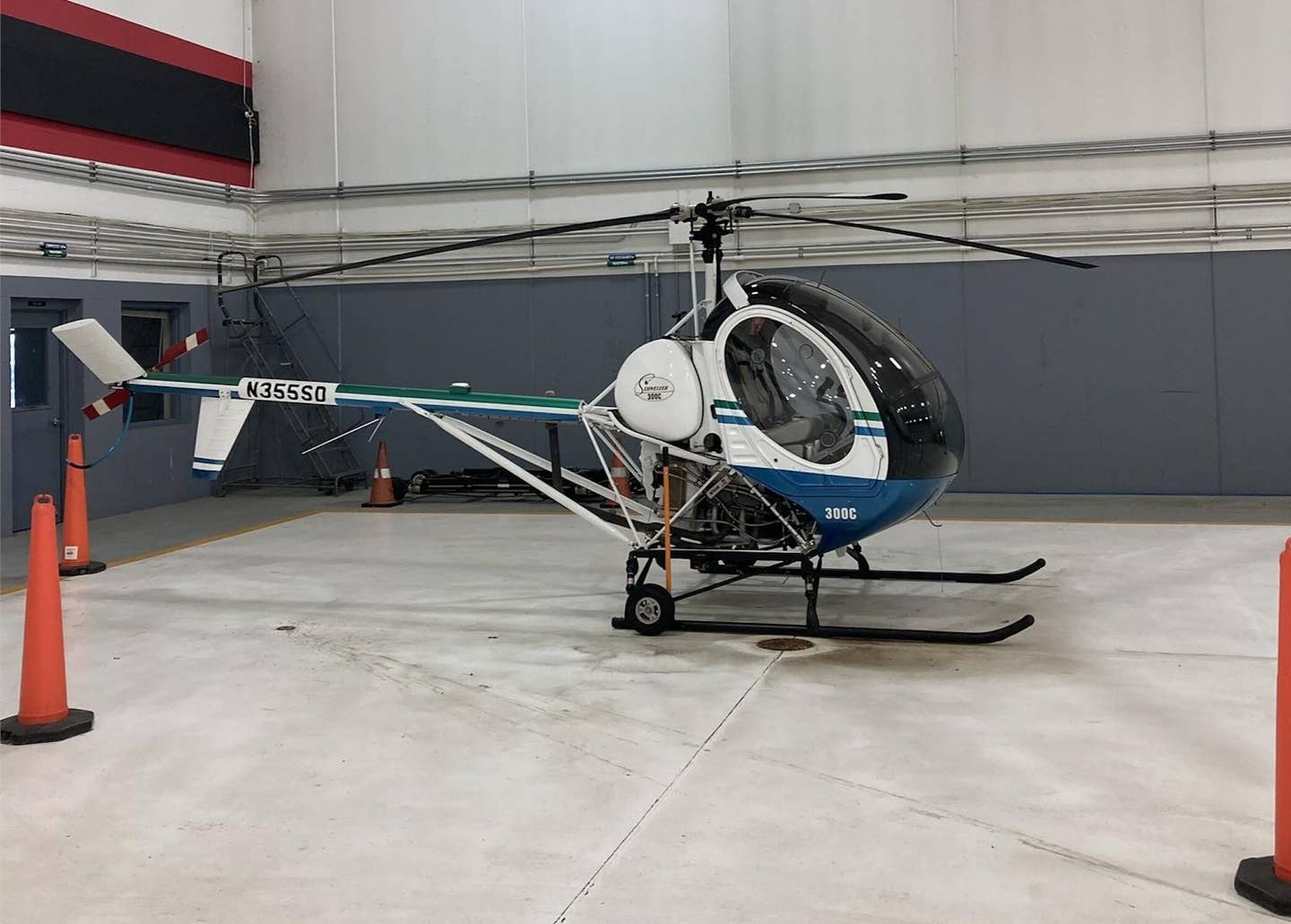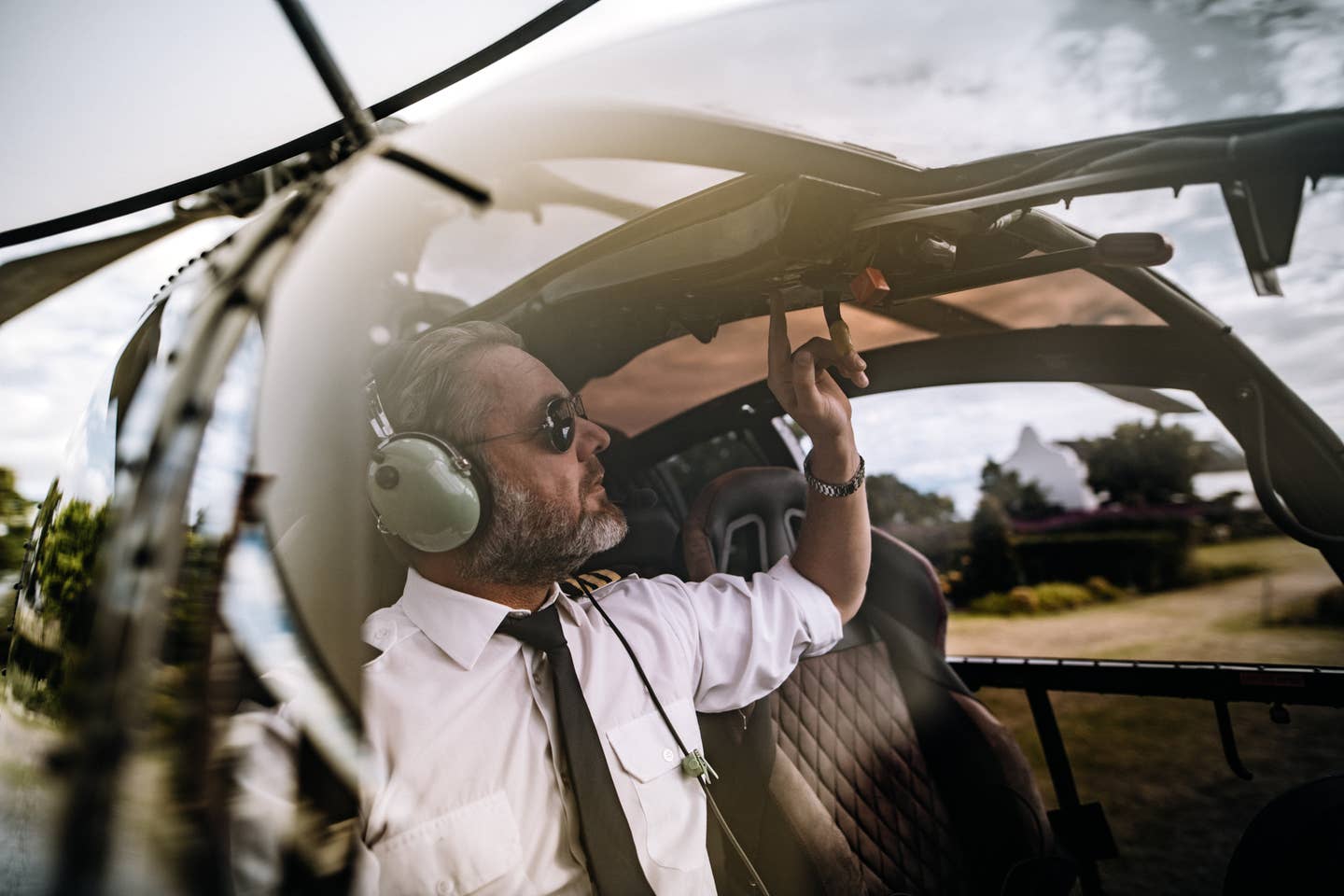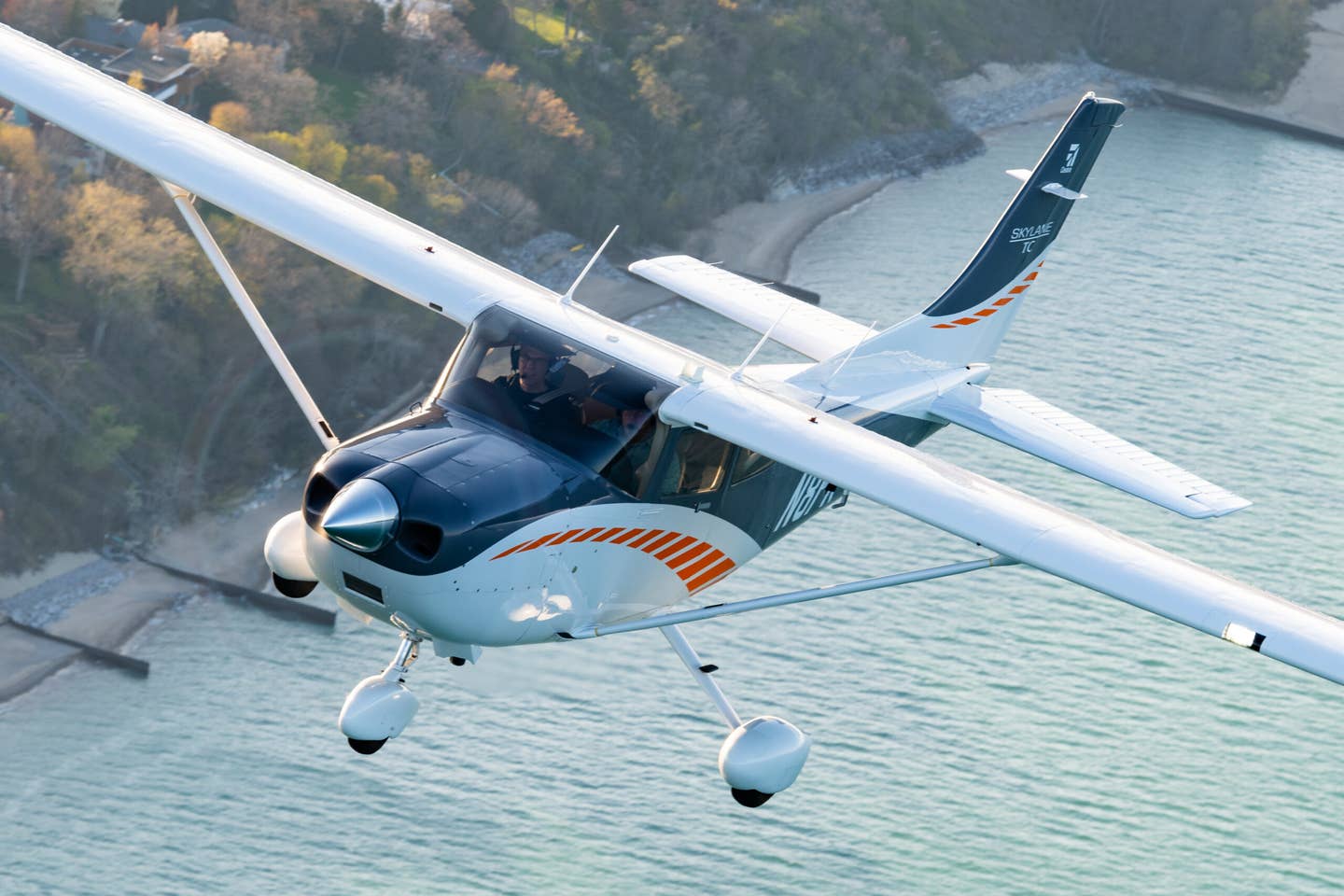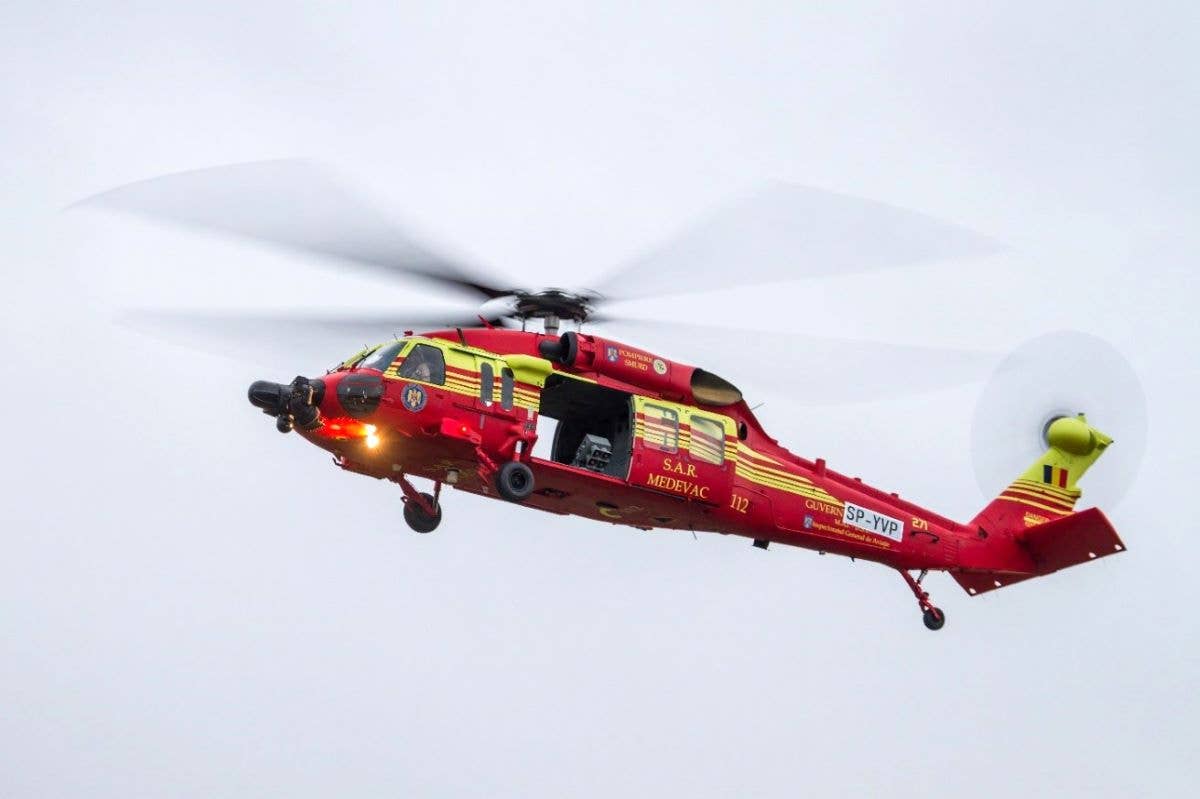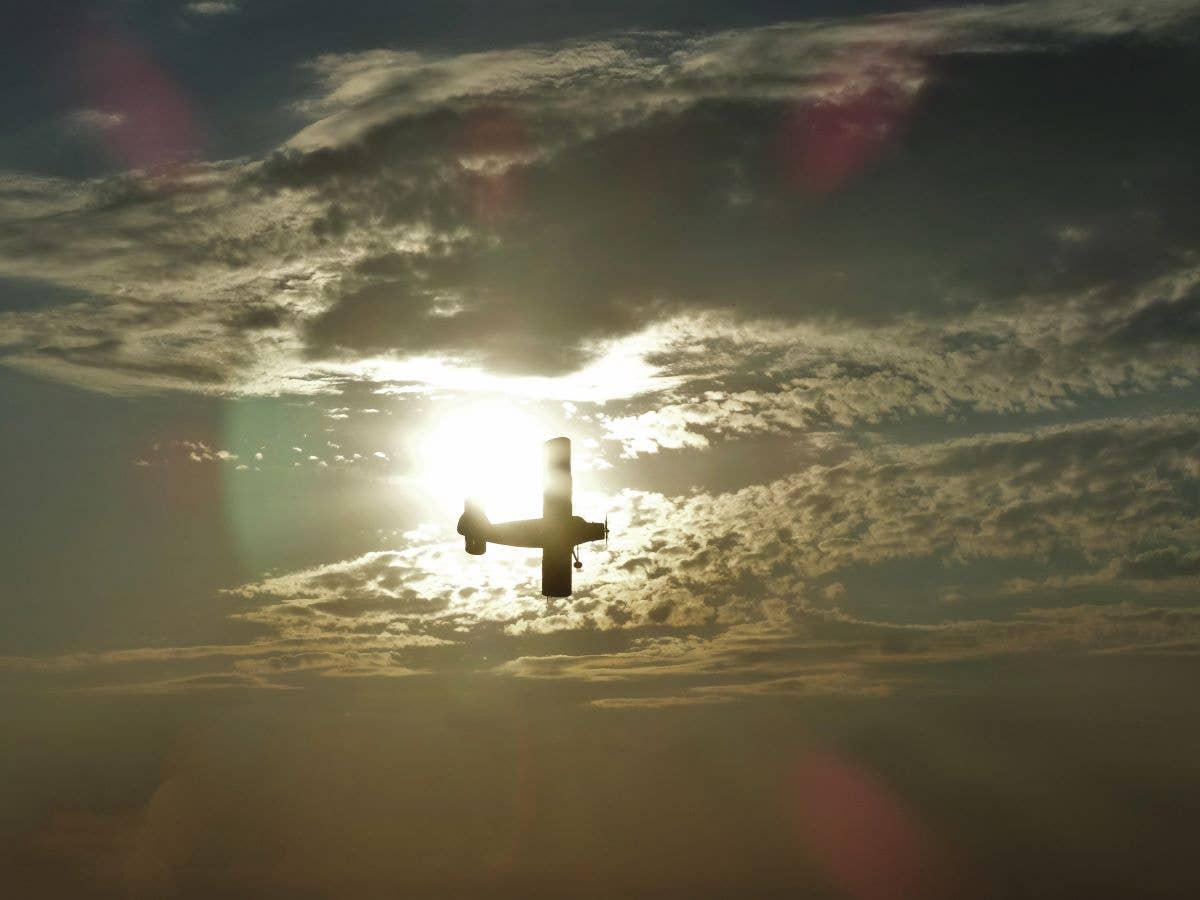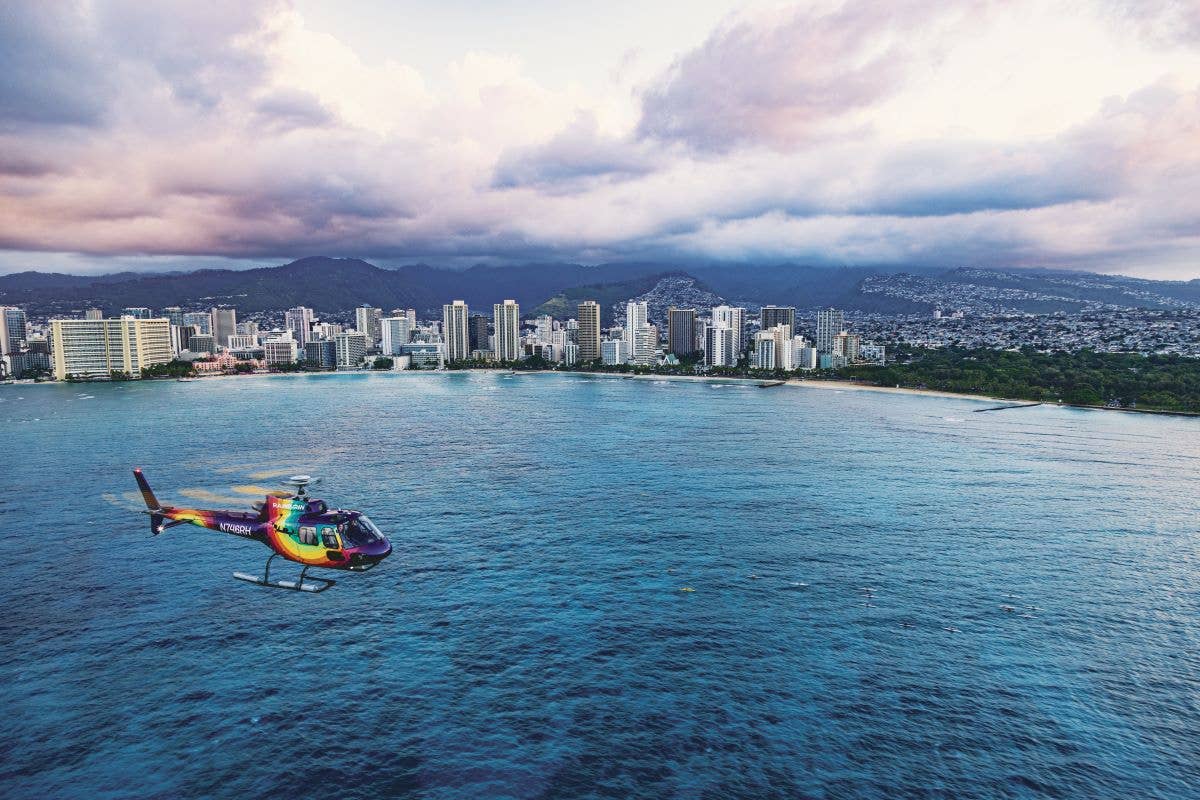
Airbus AS350 B2 [Credit: Jim Barrett]
The Airbus AS350 series includes some of the most robust light single-engine turbine aircraft on the market. Their power and maneuverability give them outstanding performance no matter the task—making the model the industry’s true multi-mission workhorse. Wide use of composite materials gives the AS350 a high power-to-weight ratio and enables it to have a spacious, open cabin with high visibility from the cockpit.
If you're not already a subscriber, what are you waiting for? Subscribe today to get the issue as soon as it is released in either Print or Digital formats.
Subscribe NowThoughtful design through its history and Airbus’ engineering experience now mean the helicopter is easy to maintain and fly, which contributes to the AS350’s excellent safety track record throughout its five decades in service. At Rainbow Helicopters, we selected the AS350 B2 to comprise a part of our fleet because it is a great fit for the Hawaiian tour market. The helicopter’s power means we can fly up to six passengers on back-to-back tours without refueling. With large windows and the ability to fly with the sliding doors open in the back, every seat can experience the breathtaking views. And we knew that this proven airframe could handle a high-volume operation safely.
We have two relatively new models in our fleet, both being placed into service in 2021, and refurbished to meet our needs. To show what makes the AS350 B2 a great choice for Rainbow, I’ll take you through a tour flight from start to finish so you can learn all about this remarkable aircraft.
A. This AS350 B2 has an Aspen Avionics EFD 1000H accompanied by a centrally-mounted iPad for use inflight. An approved EFB is used in operations as well as electronic recordkeeping, signatures, and manuals.
B. This version still utilizes fuses, while newer versions of the model switched to circuit breakers.
C. The panel is optimized for VFR flight, given the profile of most of the AStar's missions, with engine gauges positioned for close monitoring, especially during start-up.
D. The flight controls—cyclic and collective—include integrated coms and other controls for easy pilot access during flight.
Preflight Inspection
The elegant design of the AS350 B2 makes the preflight process pilot-friendly by eliminating the need to open and close a large number of compartments, and placing critical components in places that are easy to check.
I begin my standard preflight with a walkaround, usually conducted in the bright sunshine of a Honolulu morning. During the walkaround, I remove the pitot cover, the air intake and exhaust covers, the tail rotor block, and the blade tiedowns while inspecting for any noticeable damage.
After the walkround, I have to open just three cowls—two for the transmission and one for the engine—to visually check the internal components and fluids. While the cowls are somewhat large and heavy, their size provides great see-through visibility, making the compartments easy to inspect from any angle. The AS350 B2 is a clean-burning machine; noticeable smears or pools of oil on the engine or in the transmission decks are a clear sign of a major problem.
Once the engine and transmission have been checked, it is time to move on to the main rotor head. Steps on both sides of the aircraft make it easy for pilots of any height to get up to inspect the blades. The AS350 B2 has a Starflex rotor system with a hingeless, bearingless design. It uses composite materials and elastomers widely, in keeping with Airbus’ lightweight failsafe design philosophy. I look at the rotor blades for signs of cracking, chipping, splitting, and any other signs that the failsafe composite materials are damaged. I check the elastomers for dry rot, chipping, pitting, and cracking.
Once I am satisfied that the main rotor head is in good shape, I climb down and move to the rear of the helicopter to check the tail rotor. Like the main rotor, the tail rotor is made of lightweight composites and elastomers. I check the tail rotor using the same criteria as the main rotor.
With the rotor blades inspected, I do a final walkaround to make sure that the cowls are lowered and secured to prevent them from rising up in flight, and check to be sure the gas cap is in place and tight and all latches are fastened. Once I have my preflight inspection complete, I sign off on the before flight inspection, check applicable airworthiness directives, and ensure there are no open discrepancies.
Starting Up
Among modulated helicopters, the AS350 B2 is a gentle-starting aircraft. The startup sequence is short, with few buttons to push and a limited number of preliminary checks. As a best practice, I ensure that the collective control is down and locked, I have adequate voltage, and the area around the helicopter is clear before I initiate startup procedures.
Airbus refers to what is commonly known as a master switch in airplanes as the external power battery switch in the AS350 B2. Pushing this single button brings the cockpit to life. Then I engage and test the electrical and hydraulic systems before turning the boost pumps on to get the fuel flowing to the engine.
After 30 seconds of fuel flow, I am ready to begin the startup sequence. Unlike the most modern fadec-controlled aircraft, Rainbow’s AS350 B2s require a modulated start.
To avoid a hot start, Rainbow pilots “rock out!” I make a rock n’ roll sign with my right hand and then place my index finger and pinky on the T4 and Ng gauges to focus my attention on them as the engine starts. A hot start—exceeding 795 degrees Fahrenheit for more than five seconds—damages the turbine blades and other internal components of the engine. In addition to putting a damper on a glorious Honolulu day, a hot start in an AS350 B2 brings a $250,000 price tag in unexpected maintenance costs.
It’s now time to really rock ‘n’ roll. I depress the start button and advance the fuel flow control lever. The sound of the igniters popping and the muffled explosion of the engine lighting off concentrates my mind and gets my heart racing with excitement. I keep an eye on the temperature as I accelerate the engine to its idle position.
With the engine humming at idle and the blades beginning to spin, I engage the avionics and other required systems before completing additional checks. I make sure the collective is secured and locked before checking the hydraulics. The hydraulic system on the AS350 B2 is simple and efficient, with nitrogen accumulators designed to provide limited pressure in the event of a hydraulic pump failure.
Once system checks are completed, I advance the fuel flow control lever to the flight position allowing the governor to take control. The trade winds that make Hawaii’s weather nearly perfect year round also mean that we almost always have a windy environment for loading. To avoid blade sailing, Rainbow hot loads passengers with the blades spinning at flight rpm.
The steady whir of the blades at flight rpm prompts me to check that all systems are in the green, and remove the float safety pin to allow me to activate the floats, if necessary. Floats give us an extra margin of safety when we fly over water, which means we can roam freely around our island paradise.
Now we’re ready for our guests to board the aircraft to enjoy their beautiful trip around the Hawaiian Islands.
Launching a Rainbow
Nicole Battjes moved to Honolulu, Hawai’i, about 12 years ago and launched Rainbow Helicopters with a single Robinson R44 and the “spirit of aloha” so vital to life in the islands. “We seek diversity in our team and celebrate it in our customers,” says the company’s website—and that is felt throughout a visit, from the moment visitors are welcomed with beautiful, fragrant leis to the care with which they bid customers farewell after sunset photos on the ramp.
Approaching 12 years in business, Battjes has grown the fleet to field six R44s—used both for scenic tours and a little bit of flight instruction—and two AStars, flying tours, private charters, and custom trips.
“I chose the AStar because of its high useful load, powerful Arriel 1D1 engine, and floor-to-ceiling views for guests to enjoy extraordinary tours of our beautiful island home,” says Battjes. “I decided to buy a second one in order to ensure we could offer the 6-seat platform at all times, even when one is in maintenance. And to meet the post-Covid demand of tourism in Hawai‘i.”
Battjes is a board member of Helicopter Association International (HAI), and she takes safety seriously. Her team regularly conducts safety management system (SMS) training—a step up in maintaining a conscientious operation they take to heart. “We are an active participant in the FAA’s SMSVP (SMS Voluntary Program),” says Battjes, “which means we voluntarily comply with Part 5 of the FAA’s regulations.” The move towards a mandated SMS program by the FAA and National Transportation Safety Board (NTSB) continues.
Rainbow Helicopters also provides lift for photography and videography missions and has a gimbal-mounted system for providing a unique vantage point for capturing the islands’ beauty for business or recreational pursuits. A Royal Crown of Oahu tour takes about an hour and costs $395 per person, while private charters—including a Proposal Flight—cost $2,175 and up.
–Julie Boatman
Ready for Takeoff
With the guests loaded up and the helicopter ready to fly, I glance out of the large cockpit at the busy Honolulu International Airport (PHNL). More often than not, “liquid sunshine”—light rain accompanied by bright sunshine—means we can see a rainbow or two as we depart the airport.
The first sensation our passengers experience is the lift into an initial hover at 3 to 5 feet. The best way to describe how it feels to hover a helicopter is to imagine sitting cross-legged on a beach ball and balancing perfectly. While the single-engine AS350 B2 has the power and capability to execute a vertical takeoff, best practice is to achieve forward airspeed to allow recovery in the event of an engine failure. So after we hover, we execute a takeoff roll, maintaining 10 feet of altitude until we reach 40 knots, and begin the climbout.
Since we operate in Honolulu Class Bravo airspace, we use specific departures designed to keep us clear of the fixed-wing traffic. For example, the Shoreline 6 departure keeps us at or below 500 feet as we fly over the lagoon south until we reach Magic Island, where we clear the terminal area. Once at Magic Island, we climb over the surfers, paddlers, and sailboats enjoying the warm Waikiki waters to approximately 1,500 feet at a rate of 300 to 500 fpm and an airspeed of about 90 knots. Upon reaching altitude, I can level off by either increasing airspeed with the cyclic, reducing engine power with the collective, or a combination of both.
In Flight Performance
Unlike an airplane that will remain at an assigned altitude for long periods, we vary our altitude for our tours between 1,500 feet agl and 2,500 feet agl on average for terrain avoidance and noise abatement.
While VNE in the AS350 B2 is 155 knots at sea level, the average speed for our normal tour is between 110 to120 knots. For those passengers who choose to fly with the rear sliding doors open—affording a spectacular floor-to-ceiling open view—we maintain a max airspeed of 100 knots in order to make the tour more comfortable. We measure power to the rotor system with the torque meter in the aircraft, which is monitoring the twisting of the shaft. During a hover, torque can be anywhere from 90 to 100 percent, while in cruise flight, torque is reduced to 80 to 90 percent. We also monitor the Ng (gas turbine), which sits at about 90 percent on our flights.
The AS350 B2 is as powerful as it is elegant, allowing us to carry a payload of up to 1,700 pounds and still cruise at our average power settings and airspeeds. Even at max gross weight, the AS350 B2 can still easily cruise within limits.
Emergency Procedures
The spectacular visibility and smooth flying of the AS350 B2 allow our passengers to enjoy the marvelous sights while our pilots stay focused to ensure a safe flight. In-flight problems are rare, but we must be able to respond appropriately when they happen. Here are a few key emergency procedures in the AS350 B2.
There’s a common misconception that if an engine quits on a helicopter, it doesn’t have the capability to glide like an airplane. In fact, it can, and we refer to this as an autorotation. During normal powered flight, airflow is directed downward through the rotor system powered by the engine. During an autorotational descent, the upward flow of air through the rotor system will propel the rotor blades, much like when you blow on a pinwheel. This is the steady-state glide.
Unlike an airplane, the forced landing spot does not have to be a runway-type environment. Using varying techniques and depending on wind, the landing area can be as small as 100 to 200 yards. Thankfully, engine failures represent a small percentage of factors in helicopter accidents. What’s more likely to happen is flight into inadvertent IMC. The weather in Hawaii is fast-moving and highly variable. As a result, we use the Hawai‘i Air Tour Common Procedures Manual, which designates a weather-enhanced safety area with cameras that can be used for avoidance. However, even with these enhanced safety areas, Rainbow Helicopters has specific policies, procedures, and annual training on unusual attitudes and IIMC recovery. Notably, the AS350 B2 is not IFR certified.
One more beauty of the small footprint of the AS350B2 is that during nearly any emergency, landing is always an option. In fact, the Helicopter Association International’s very popular “Land and Live” initiative encourages pilots to do just that.
After completing a spectacular tour, we return to PHNL via established arrivals similar to our departures. Sometimes ATC routes us directly over midfield at700 feet while visitors to Hawai‘i flow beneath us in a stream of fixed-wing commercial operations.
Return to Base
We gently decelerate from cruise airspeeds until we are on our approach angle, at which point we establish a rate of closure that appears to the pilot to be a brisk walking pace. We are often instructed to land “at our own risk” at our ramp because it is in a non-movement area, and the tower cannot technically clear us into an area that is not controlled, such as a runway or taxiway.
Instead of rolling on the ground like an airplane to our parking space on the ramp, I hover taxi at 3 to 5 feet. Once I have reached a hover over my parking spot, I lower the collective until the helicopter gently settles to the ground. An interesting characteristic of hovering in an AS350B2 is the tendency for the aircraft to drift in the direction of the tail rotor thrust. This “translating tendency” is countered by the pilot with lateral cyclic, which causes the AS350 B2 to hang right-skid low.
Pilots new to the AS350 B2 take a bit of time to get used to the feeling of tiptoeing down to the landing, which inspired the manufacturer to name the AS350 “Ecureuil,” or “Squirrel” in English. After we have settled on the ground, the operations personnel arrive to help guests unload.
After landing, the collective is down and locked, the cyclic is secured with friction, and the fuel flow control lever is brought to idle. All unnecessary systems are turned off, the float safety pin is reinstalled, and after only 30 seconds, the fuel flow is reduced to zero, and the engine is shut down.
Shutdown and Postflight
Once the main rotor rpm reaches 100 (typical flight rpm is 390), I apply the rotor brake to stop the blades from turning. Next, I relieve the pressure in the tail rotor hydraulic system and center the pedals using the “Hyd Test” push button.
Before turning off the external power battery, I record the engine cycles, Hobbs meter, and fuel level. After shutdown, I hop out of the cockpit and conduct a short list of required inspections during the postflight before filling out all necessary paperwork.
Every evening at Rainbow, the maintenance team performs an “after last flight inspection,” services any fluids, and conducts an engine rinse. These processes are made easier by the A S350 B2’s maintenance-friendly design. Because we fly a high volume of tours, they also perform a required 7-day/10-hour check most nights. Once all maintenance activity is complete, the team puts the helicopter to bed, replacing all the covers and blade tie-downs that I removed during the preflight.
In our operation, most pilots get to go home and enjoy the Hawaiian evening while our magnificent maintenance team ensures the aircraft is ready to fly for the next day. What a life it is to be a pilot in paradise!
Airbus AS350 B2
Powerplant: Turbomeca Arriel 1D1, 732 shp turbine
Seats: 1 pilot + 5/6 passengers
Main Rotor Diameter: 35 ft. 1 in.
Tail Rotor Diameter: 6 ft. 5 in.
Max Takeoff Weight: 4,960 lbs.
Max Takeoff Weight, External Load: 5,512 lbs.
Empty Weight (std): 2,690 lbs.
Useful Load: 2,270 lbs.
Standard Fuel Capacity: 939 lbs.
Max Speed (VNE): 155 kts.
Fast Cruise Speed: 133 kts.
Recommended Cruise Speed (RCS): 122 kts.
Rate of climb (sea level): 1,675 fpm
Service Ceiling: 15,100 ft.
Hover Ceiling at Takeoff Power (ISA): 9,850 ft.
Max Range (no reserve, RCS): 360 nm
Endurance (no reserve, 54 kts.): 4 hrs., 24 min.
Max Altitude: 20,000 ft.
Min. Temperature: -40 degrees F
Max Temperature: ISA plus 95 degrees F/122 degrees F
This article was originally published in the March 2023 Issue 935 of FLYING.

Subscribe to Our Newsletter
Get the latest FLYING stories delivered directly to your inbox


